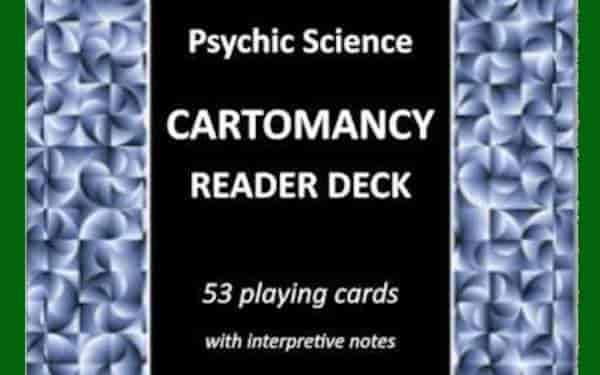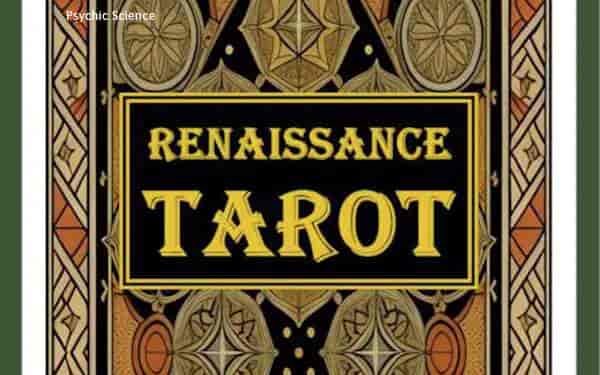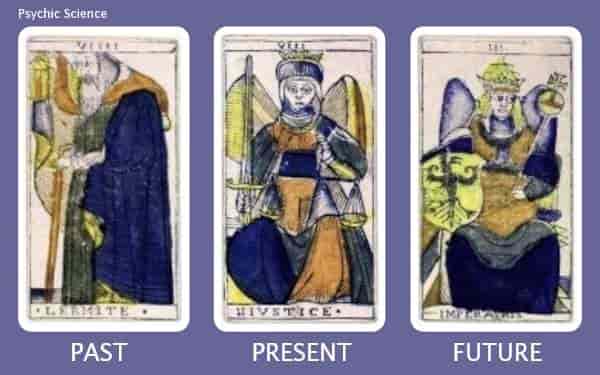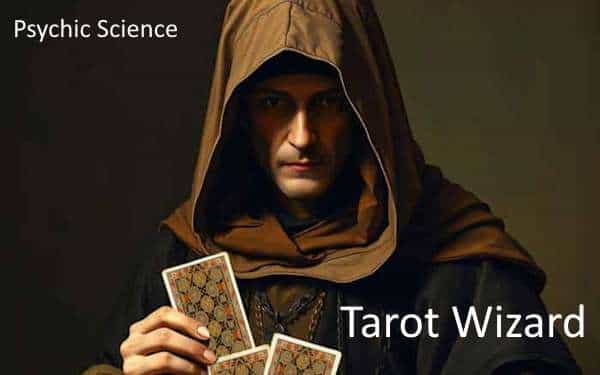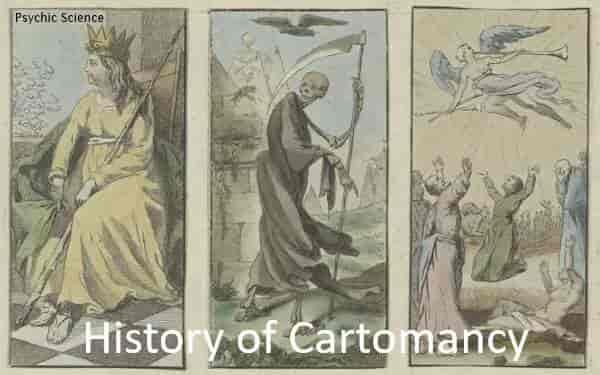
Cartomancy Spreads
For playing cards and tarot
Using Tarot and Cartomancy Decks
Cartomancy usually begins by asking a question of the cards. As with the I Ching and other forms of divination, your questions should always relate to a specific personal situation, and should seek advice on how best to respond to current and future circumstances. The cards are not intended to offer specific predictions about events. Rather their guidance focuses on the general direction in which you might wish to proceed, and on the qualities needed to skillfully navigate through whatever difficulties and uncertainties you may experience.
There are various technical procedures and 'spreads' that can be used in cartomancy and tarot reading, and you may already have your own favorite methods. The simple methods described below can be used with ordinary playing cards, special cartomancy decks (such as The Psychic Science Cartomancy Reader Deck), or any tarot deck.
For those new to cartomancy (as well as for more experienced users) we recommend the following procedures. You will find additional suggestions for procedures and spreads in the 'Further Study' section below.
Single-Card Reading
- Carefully frame your question and focus on it as you shuffle the face-down deck.
- When you feel the time is right, place the face-down deck on the table or other surface. Still focussing on your question, cut the deck and complete the cut.
- Turn the top card face-up.
- Interpret this card in relation to your question and situation.
This single card method can also be used very effectively every morning, to give a 'heads up' on the theme or personal task that you might expect for that day.
By using this method regularly, you will not only become familiar with the cards, but you will also improve your ability to interpret their meanings. You may also notice that some cards seem to show up quite regularly. Such cards may be particularly significant in your life and should be given special consideration.
Three-Card Spread
- [Optionally] Select one of the court cards to represent the inquirer, and place this 'Significator' card face-up on the table.
- Carefully frame your question and focus on it as you shuffle the face-down deck.
- When you feel the time is right, cut the deck and deal the top three cards, face-down, in a row from left to right.
- Turn the left-hand card face-up. This card generally indicates factors in the IMMEDIATE PAST that have led to the current circumstances. You should attempt to interpret it in this way.
- Turn the middle card face-up. This card generally indicates features that are active in the CURRENT SITUATION, and should be interpreted in this light.
- Turn the right-hand card face-up. This card generally indicates features that may be expected to become important in the IMMEDIATE FUTURE, or what you may need to focus on in order to resolve your situation.
Four-Card Spread (The Seasons)
This spread is useful when you wish to explore the way in which a project or relationship may be expected to develop.
- [Optionally] Select one of the court cards to represent the inquirer, and place this 'Significator' card face-up on the table. If your question is about a personal relationship, select a second court card to represent the other person and place this face-up next to the first.
- Carefully frame your question and focus on it as you shuffle the face-down deck.
- When you feel the time is right, cut the deck and deal the top four cards, face-down, in a row from left to right.
- Turn the left-hand card face-up. This card represents SPRING and the factors influencing the beginning of the new project or relationship.
- Turn over the second card dealt. This represents SUMMER, when progress is at its height.
- Turn over the third card. This represents FALL (Autumn) when things have matured and are beginning to show their age.
- Turn the fourth card. This represents WINTER, a time for quiet reflection on past progress and future possibilities..
Seven-Card Spread (The Horseshoe)
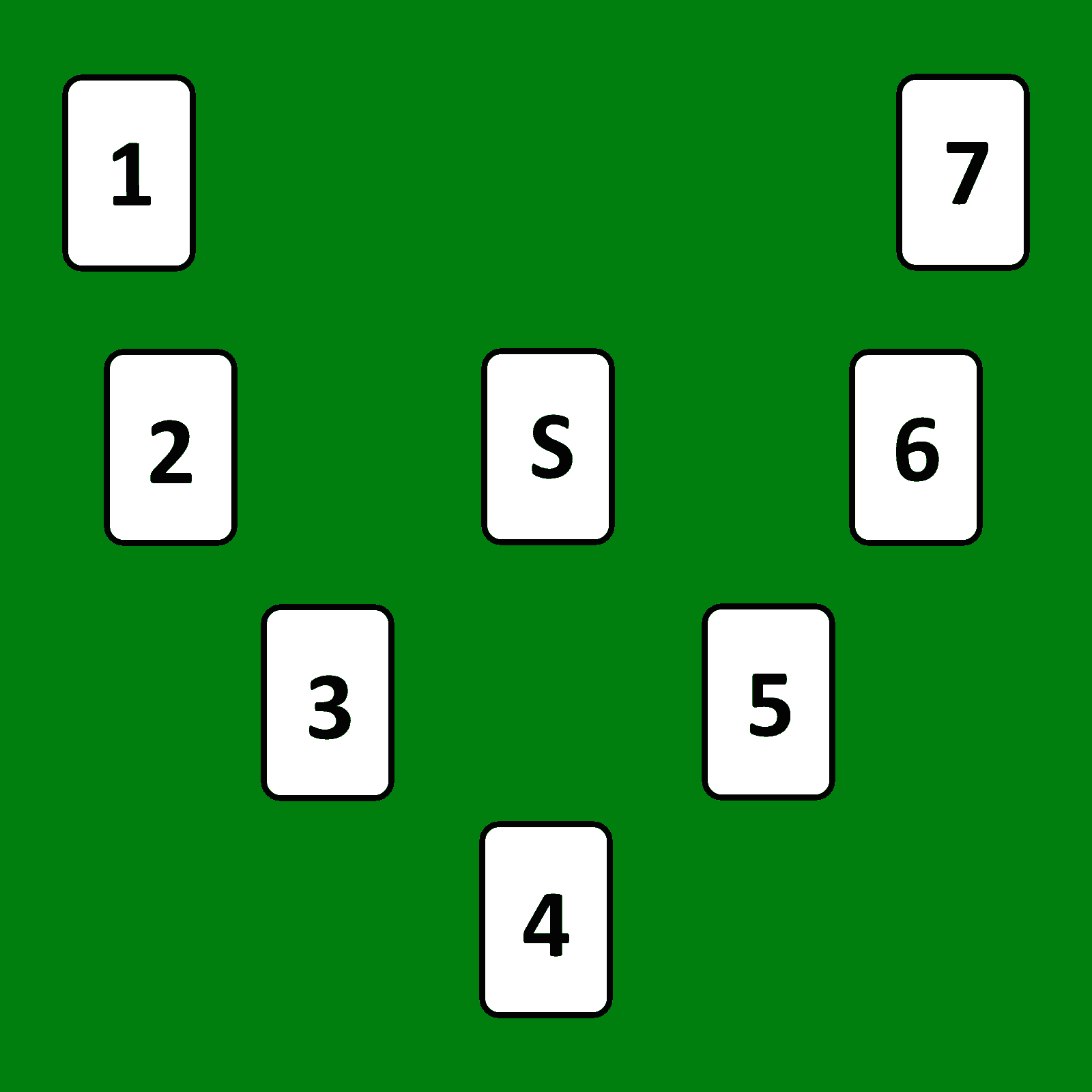
- [Optionally] Select one of the court cards to represent the inquirer, and place this 'Significator' card face-up on the table.
- Carefully frame your question and focus on it as you shuffle the face-down deck.
- When you feel the time is right, cut the deck and deal the first seven cards face-down in a horseshoe from top-left to top-right, encircling the Significator (S) if you have one, as illustrated. Turn over and interpret the cards in the sequence they were dealt.
- Card 1 indicates the PAST.
- Card 2 indicates the PRESENT.
- Card 3 indicates unconscious influences (the SHADOW).
- Card 4 indicates OBSTACLES.
- Card 5 indicates the influence of OTHERS.
- Card 6 indicates needed ACTION.
- Card 7 indicates the potential OUTCOME.
Ten-Card Spread (The Celtic Cross)
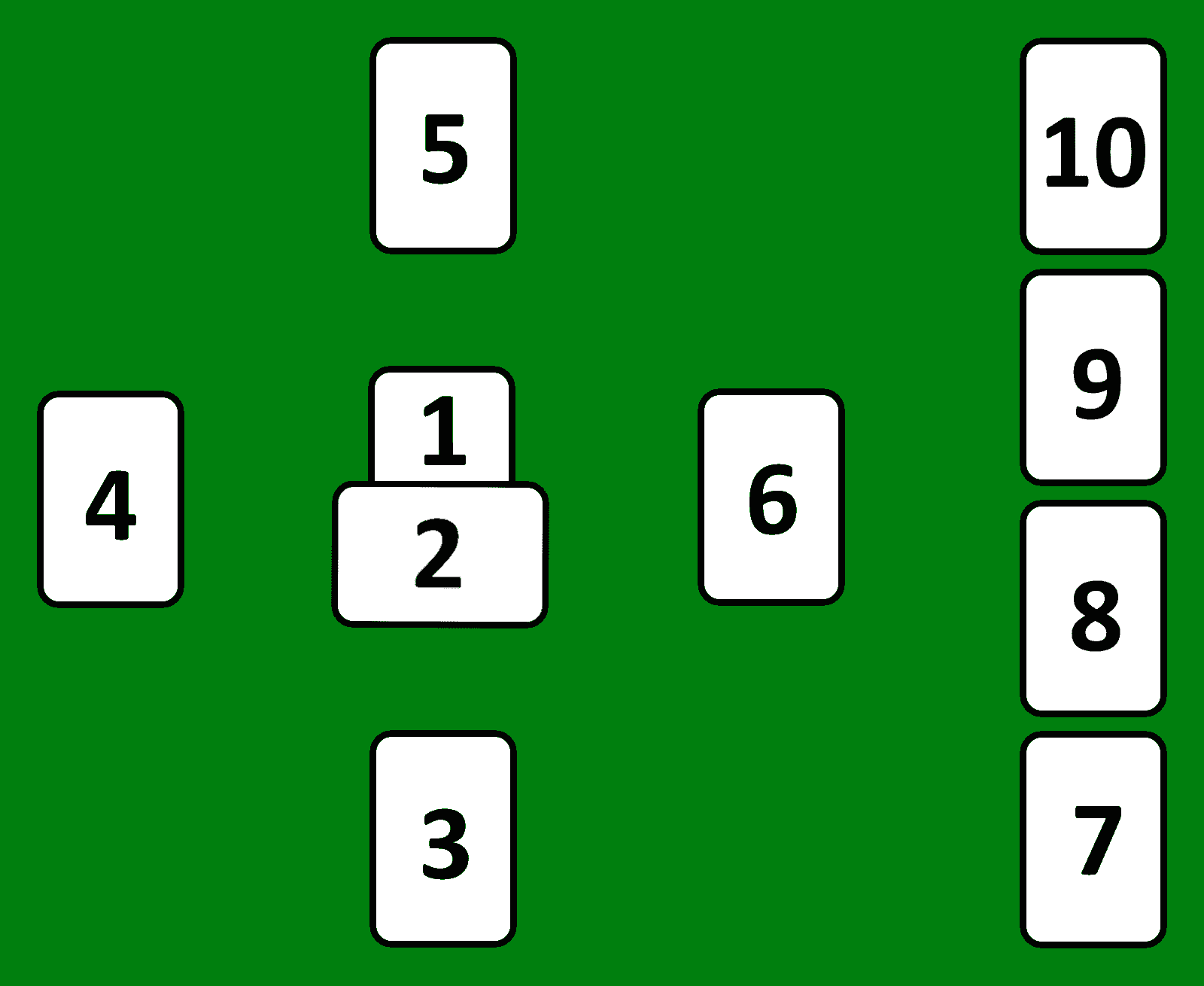
This is a very popular advanced spread that was first described by British occultist A.E. Waite in The Key to the Tarot (1910). The cards are laid out in two adjacent symbolic shapes: (1) an equal-armed cross, with a focus on the center (six cards), and (2) a vertical column or ladder (four cards) placed to the right of the cross.
- Carefully frame your question and focus on it as you shuffle the face-down deck.
- When you feel the time is right, cut the deck and deal the first ten cards face-down as shown in the illustration. Alternatively, you can use your intuition to choose ten cards anywhere from the deck and place them in the order shown.
- Turn over and interpret the cards, in the order dealt, using the following guidelines
- Card 1 indicates the HEART OF THE MATTER.
- Card 2 indicates OBSTACLES to be faced.
- Card 3 indicates the BACK STORY.
- Card 4 indicates what is PASSING AWAY.
- Card 5 indicates the IDEAL or ASPIRED SITUATION.
- Card 6 indicates what is COMING.
- Card 7 indicates the querent's CURRENT ATTITUDE.
- Card 8 indicates the influence of the ENVIRONMENT, or of OTHER PEOPLE.
- Card 9 indicates HOPES AND FEARS.
- Card 10 indicates the potential FINAL OUTCOME.
Eleven-Card Spread (The Watchword Keys)
The Celtic Cross Spread utilises the archetypal symbolism of spatial position and direction (e.g., left vs right, up vs down, center, vertical ladder).
The advanced Watchword Keys Spread expands upon the idea of spatial symbolism. Described here for the first time, its structure follows that of the Watchword Personality Test developed by Michael Daniels PhD - a word association technique, based on the psychological theories of C.G. Jung - which uses spatial principles to analyze the structure and dynamics of the psyche. The Watchword Keys Spread is especially useful for self-exploration and personal reflection.

In the Watchword Personality Test and Watchword Spread:
- The vertical axis represents the principle of PROGRESSION (up) vs REGRESSION (down).
- The horizontal axis represents the principle of INNER (left) vs OUTER (right).
- The diagonals represent the combinations of PROGRESSION-REGRESSION and INNER-OUTER.
- The center represents the BALANCE or TENSION between PROGRESSION-REGRESSION and/or INNER-OUTER.
- To begin the Watchword Keys Spread, select one of the court cards that best represents your basic personality, dominant role, or current situation. Place this 'Significator' card to one side.
- Carefully frame your question and focus on it as you shuffle the face-down deck.
- When you feel the time is right, cut the deck and deal the first eleven cards face-down as shown in the illustration. Alternatively, you can use your intuition to choose ten cards anywhere from the deck and place them in the order shown.
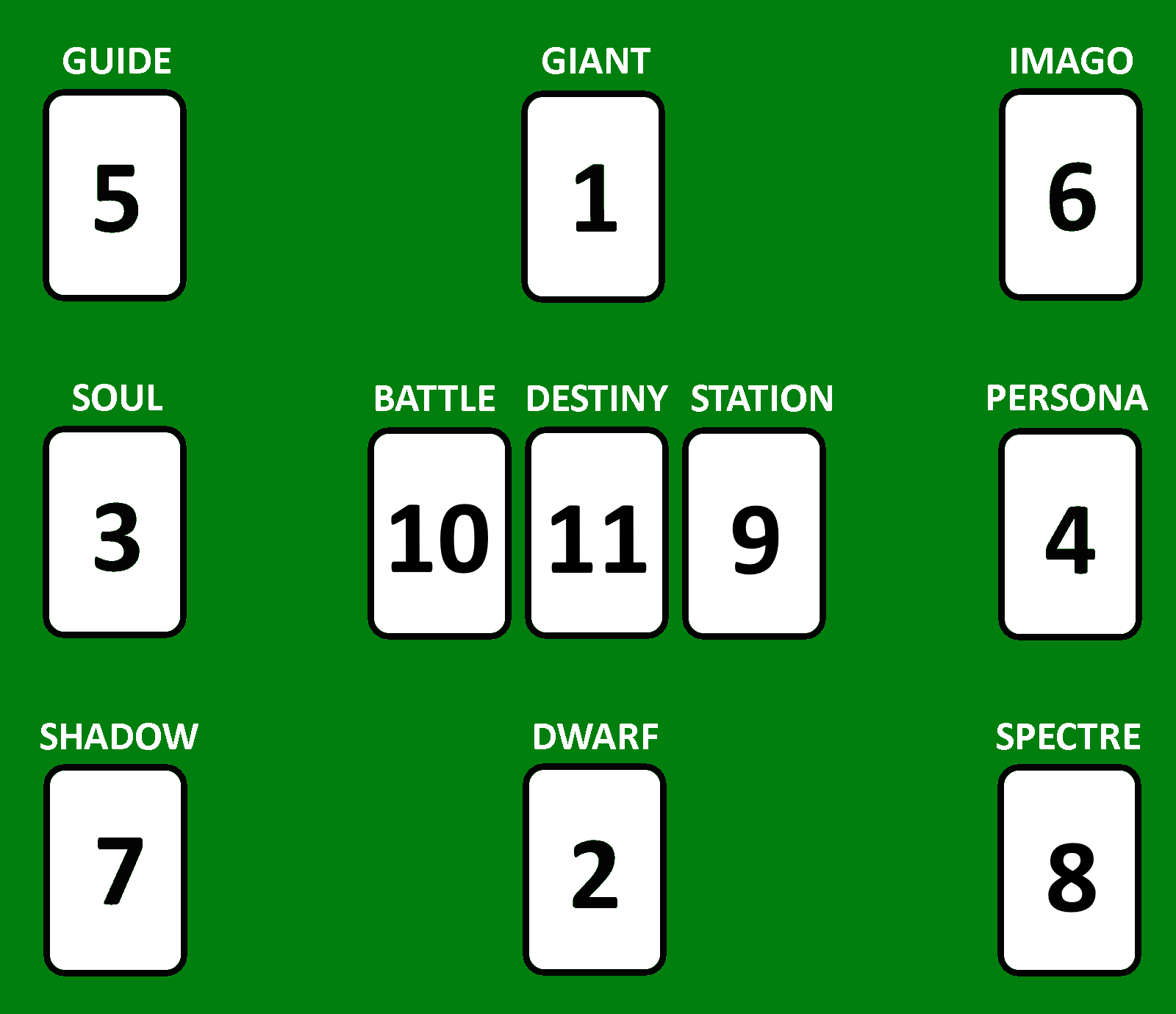
- Turn over and interpret the cards, in the order dealt, using the following guidelines.
- Card 1 (GIANT) indicates DRIVING FORCES (e.g. Dominant motivation; Source of strength; Creative impulses).
- Card 2 (DWARF) indicates INERTIAL TENDENCIES (e.g. Source of weakness; Features that are holding you back; Characteristics that should be held in check or moderated).
- Card 3 (SOUL) indicates BASIC INNER PERSONALITY (e.g. Private or subjective self; Thoughts and feelings; Emotional situation).
- Card 4 (PERSONA) indicates BASIC OUTER PERSONALITY (e.g. Public or objective self; Mask or performances; Social roles).
- Card 5 (GUIDE) indicates HIGHER SELF (e.g. Sense of inner teacher; Inner power or greatness; Intuitive insights).
- Card 6 (IMAGO) indicates EGO-IDEALS (e.g. Conscious values, goals and desires; Idealized image of the self; Imagined future situation).
- Card 7 (SHADOW) indicates REPRESSED MATERIAL (e.g. Dark or hidden self; Disliked personal characteristics; Unrecognized qualities).
- Card 8 (SPECTRE) indicates PROBLEMS, ANXIETIES, FEARS (e.g. Areas where expression is difficult; Rejected values; Old preoccupations).
- Card 9 (STATION) indicates your CURRENT SITUATION, or BASIC SENSE OF SELF (e.g., your continuing preoccupations, general emotional tone, or personal style). It can often be interesting to compare the qualities of this card with those of the Significator card that you chose at the beginning.
- Card 10 (BATTLE) indicates PERSONAL TASK, QUEST, OR ADVENTURE (e.g. Field of conflict; Moral dilemma; Inner turmoil).
- Card 11 (DESTINY) indicates REALIZED SELF (e.g. Projected outcome of battle or quest; Ultimate goal or value; Personal transformation).
For further guidance on interpreting the Watchword Keys, and to take the FREE online Watchword Personality Test, visit watchwordtest.com
Twelve-Card Spread (The Astrological Houses)
This advanced spread is based on the twelve traditional 'houses' of an astrological chart and gives a wide-ranging personal reading that covers multiple areas of life.
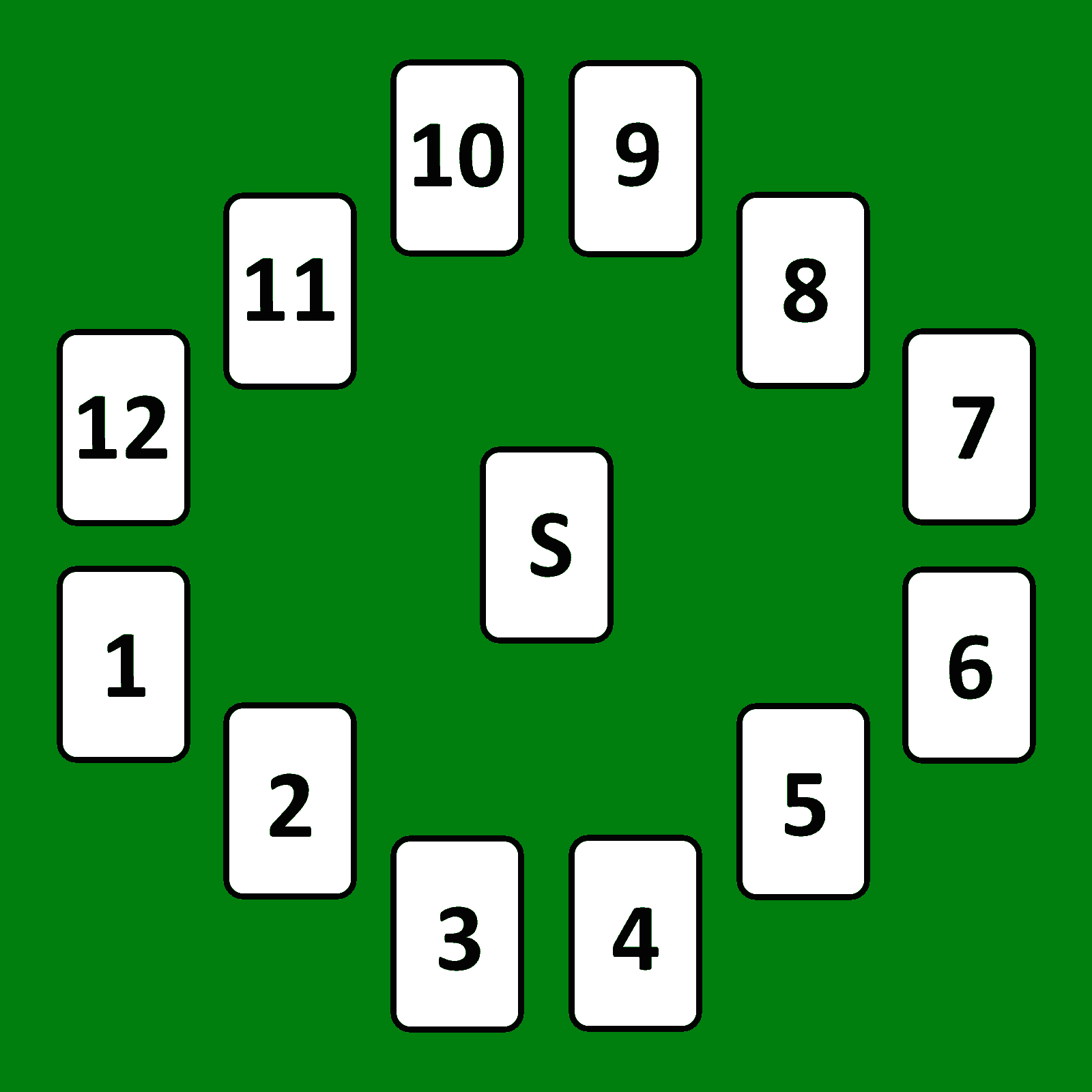
- Select one of the court cards to represent the inquirer, and place this 'Significator' card face-up on the table.
- Carefully frame your question and focus on it as you shuffle the face-down deck.
- When you feel the time is right, cut the deck and deal the first twelve cards FACE-UP in an anti-clockwise circle around the Significator (S), starting at the left, as illustrated. The cards can then be interpreted in any order.
- Card 1 indicates BEGINNINGS, SELF, and PHYSICAL BODY.
- Card 2 indicates POSSESSIONS, MONEY, and MATERIAL SITUATION.
- Card 3 indicates MIND, THINKING, and COMMUNICATION.
- Card 4 indicates HOME, FAMILY, and EMOTIONS.
- Card 5 indicates ROMANCE, CREATIVITY, and PERSONAL EXPRESSION.
- Card 6 indicates HEALTH, WORK, and SERVICE.
- Card 7 indicates PARTNERSHIPS, CONTRACTS, and BUSINESS.
- Card 8 indicates TRANSFORMATION, MYSTERY, and SEXUAL RELATIONS.
- Card 9 indicates EXPLORATION, TRAVEL, and EXPANSION.
- Card 10 indicates AMBITIONS, ACHIEVEMENT, and AUTHORITY.
- Card 11 indicates GROUPS, SOCIAL WELFARE, and INNOVATION.
- Card 12 indicates ENDINGS, SEPARATION, and SPIRITUALITY.
Reversed Cards
Many users like to incorporate reversed cards in their readings. To do this, the deck is cut into two piles at the beginning. One pile is then turned around, top to bottom, and the two face-down piles are shuffled together before continuing with the procedure as normal.
When a reversed card appears in the reading, it is interpreted as a relative ABSENCE or CONTRADICTION of the indications shown on the card.
General Tips
- Try out different spreads and ways of selecting cards. Choose the procedures that you find most natural and useful.
- Use your intuition and imagination to expand upon the ideas suggested by the cards, and to adapt their meanings to your question and situation.
- Your interpretive ability will improve if you familiarize yourself with your chosen deck.
- Gain personal experience before you attempt readings for other people.
Further Study
BURGER, Evelin & FIEBIG, Johannes. (2014). Complete Book of Tarot Spreads. Sterling Ethos.
GREER, Mary K. (2019). Tarot for Your Self: A Workbook for the Inward Journey. Weiser Books.
STOEFFLER, Kenneth. (2022). A Collection of Mostly 19th Century Cartomancy Methods. Independently published.

